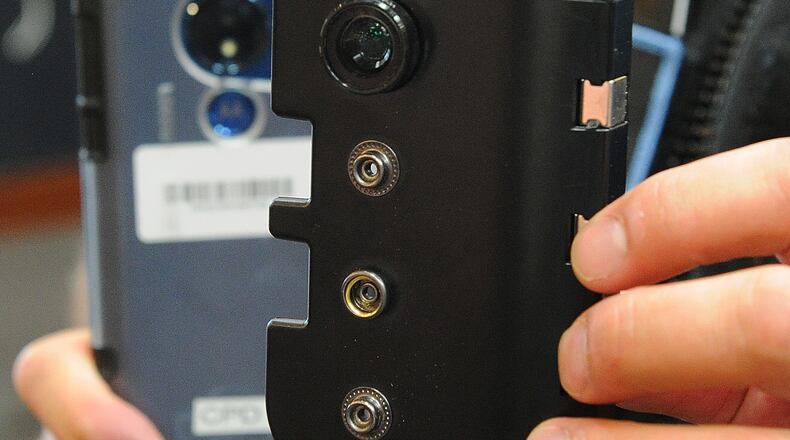Police Chief Adam Colon said, “the officers are 100% in favor” of the new body cameras.
Colon said it will be a few months until officers will be wearing the body cameras on patrol. He said the first payment is expected to be due in mid-April and that there is sufficient money available in the general fund.
City officials said the safety of the officers and citizens is a priority, and the body cameras compliment the Tasers and other equipment used by officers.
“We’ve discussed this in the past,” said Councilman Michael Aldridge. “It’s part of the cost of doing business.”
In October, Mayor Brent Centers announced the city was seeking a grant through the state Office of Criminal Justice for $222,000 to cover most of the costs to outfit body cameras for its 19 patrol officers over five years. He said the ongoing yearly cost of the program would be about $55,000 a year.
Centers said the agreement for the Axon Body 3 camera covers the costs of the body cameras, chargers, storage in the cloud, upgrades and maintenance.
He said the cloud-based Axon Body 3 camera is activated when an officer draws his sidearm or Taser, and when the cruiser’s lights and sirens are turned on during a pursuit. It also allows a dispatcher to see the GPS location where the officer is in real time, he said.
City Manager Jonathan Westendorf said Ohio leads the nation in keeping information redacted of uninvolved individuals when using body cameras.
“This is really a big deal with the body cameras,” Westendorf said. “It builds transparency and trust with the community because of the ability to get to the facts quickly.”
Last month, Lebanon City Council approved an agreement with Axon to equip its patrol officers with body cameras and its marked units with in-cruiser cameras.
This spring, 31 Lebanon police officers will be outfitted with body cameras as part of their uniform and later this year, advanced cameras will go in their 14 marked cruisers.
Lebanon City Council approved entering a 10-year, $541,783 contract with Axon Enterprise, Inc., for the body cameras and in-cruiser camera systems.
Axon also provides periodic refreshes of the body and in-cruiser cameras as part of the package. The system also integrates the body camera, in-cruiser camera, Taser, evidence and records management systems.
Troopers at the Ohio State Highway Patrol’s Lebanon post have been recently outfitted with body cameras and new cruiser cameras and are using them now.
Englewood was the first area department to use them, starting in 2014, and officers there are on their third generation of cameras. Other agencies in the region are using body cameras that are connected to cruiser cameras.
Earlier this month, Centerville Police received a $115,000 state grant for their body cameras and said they are exploring which company to contract with.
Miamisburg, Beavercreek, Xenia, Riverside and the Montgomery County Sheriff’s office also got state grants this month for body-worn camera programs.
About the Author

